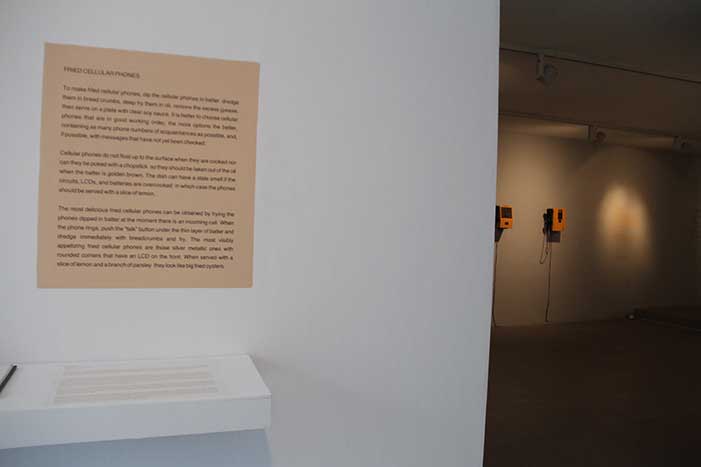AUDIBLE FORCES
Rasika Kajaria is pleased to announce 1 after 320, a new series of non-commercial initiatives explorating new formats of presenting contemporary art centered in the Lado Sarai neighborhood of New Delhi. 1 after 320 projects will be curated by a number of outstanding curators and is a parallel initiative to Kajaria’s gallery Exhibit320.
The first installment of this new ambitious series of “1 after 320” exhibitions is curated by Mumbai based curator Diana Campbell Betancourt. Exploring the medium of sound in contemporary art in a series of exhibitions, she aims to expand the reach of the works of art out of the white cube gallery and into public space in New Delhi. Tools such as harnessing the technology of mobile phone applications will be an integral part of the exhibition concepts. A great number of the artists selected for these exhibitions have exhibited in major museums and art events worldwide, including dOCUMENTA(13), the Highline in New York, the Guggenheim, and the Venice Biennale. The majority of the artists in this exhibition are exhibiting in India for the first time.
The first chapter of Campbell Betancourt’s exhibition is entitled “Audible Forces” and opens on November 16, 2013 at F-320 Lado Sarai. The international group exhibition analyzes the ways in which sound and listening provides insight into wider powers that affect our sense of reality. A few examples of works in the show are a performance work by London based Argentinean artist Amalia Pica (b. 1978) entitled Eavesdropper that delves into the idea of surveillance and myths of privacy in contemporary society, a reflection which feels especially timely after the Edward Snowden revealings from earlier this year. A small sculpture by Mexican artist Pedro Reyes (b. 1972), Disarm (Violin VI) demonstrates how collective actions of society can quell violent sounds of gunshots by transforming weapons into musical instruments. A sound work by the pioneering Conceptual and Feminist American artist Mierle Laderman Ukeles (b. 1939) hints at the importance of maintenance and its potential to transform even the largest landfills into havens for birdsongs. The exhibition also presents a work by Scottish artist Katie Paterson (b. 1981) that allows viewers to directly connect to global warming by listening to the sound of the world’s largest glacier melting, which was once made possible to experience real time by dialing a phone number that she had connected to a microphone and amplifiers that she embedded in the glacial lake. “Audible Forces” serves to provide context for a larger public exhibition that Campbell Betancourt has co-curated with the New York based curator from the Clocktower Tim Goossens entitled “Listen Up!”
“Listen Up!” is a unique public sound exhibition that is designed to transform the way audiences in New Delhi experience art by using digital platforms to make sound art publically accessible across the city without restrictions of permissions or sound pollution through the capabilities of cellular phones. Several works in “Audible Forces”
will address the use of phones and communication in contemporary art, including works by Christian Marclay (b. 1955), Navin Thomas (b. 1974), and Beom Kim (b. 1963), and the exhibition references the history of phones and contemporary art such as the seminal 1969 exhibition Art by Telephone at the Museum of Contemporary Art Chicago. Listen Up! will commence in pilot mode in November at the Select CITYWALKCitywalk Mall, in the lifts and will launch in full-scale across the city in late January 2014, in locations ranging from the India Art Fair, to the Saket Metro, to Qutub Minar, to the Garden of Five Senses, to Lado Sarai. Some artists to look forward in Listen Up! are Rohini Devasher (b. 1978), Raqs Media Collective (founded 1992), Rashmi Kaleka (b. 1957), Uri Aran (b. 1977), Japanther (founded 2001), Zipora Fried (b. 1964), and Rachel Mason ( b. 1978).

